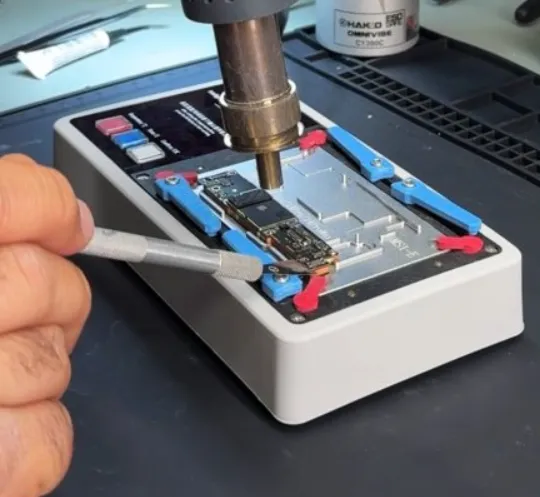When it comes to smartphones, Apple hasn’t always been praised for making repairs easy. But the latest iPhone 16e teardown suggests that times are changing. According to iFixit’s analysis, the new model continues Apple’s recent trend of designing devices with repairability in mind, bringing some thoughtful engineering updates that set it apart.
Smarter Battery Adhesive and Heat Management
One of the most notable changes in the iPhone 16e is the introduction of an electrically-released adhesive for the battery. Unlike the traditional stretch-release strips, this system frees the battery within seconds by applying power to a conductive tab and screw post. The result? Faster, less risky battery replacements that reduce the chance of tearing or accidental damage.
Another surprise is what the phone doesn’t have: MagSafe. While some might miss the convenience of magnetic wireless charging, the absence of MagSafe components means the battery avoids the extra heat associated with wireless charging coils. This could mean a longer-lasting battery in exchange for slightly fewer charging options.
Simplified Port Repairs and Internal Layout
Apple has also tweaked the iPhone 16e’s charging port assembly. Though replacing the port still isn’t a simple task, the company has provided official repair manuals, making the process more accessible for technicians. Inside, a redesigned metal clip secures the back cover and shields the flash assembly cable, helping protect delicate parts from accidental damage during disassembly.
The C1 Modem: Apple’s Boldest Move Yet
A highlight of the teardown is Apple’s new custom-built C1 modem. Replacing Qualcomm’s hardware, the C1 is manufactured on a 4-nanometer process with an integrated DRAM and a separate 7-nanometer transceiver. This transition represents more than just a technical upgrade—it’s Apple’s strategic step toward reducing dependency on external suppliers, signaling a future where more of its core technology is developed in-house.
Face ID Over Touch ID
The iPhone 16e joins Apple’s flagship lineup in adopting Face ID over Touch ID. By removing the physical Home button, Apple eliminates a common failure point, simplifying repairs in the process. The shift also minimizes complications caused by Apple’s parts pairing restrictions, which often made independent repairs more difficult.
Repairability Score and Consumer Trade-Offs
iFixit has given the iPhone 16e a preliminary repairability rating of 7 out of 10—the highest ever for an iPhone. This is a significant milestone for Apple, but it comes with a caveat. While the device is more repair-friendly than previous generations, its pricing puts it in competition with the iPhone SE, which some argue still offers better overall value despite fewer technical upgrades.
In the end, the iPhone 16e shows that Apple is serious about making its devices more sustainable and serviceable. For users who care about longevity and repair options, this may be the most practical iPhone yet—even if the missing MagSafe feature and higher price tag spark debate.
